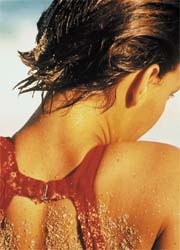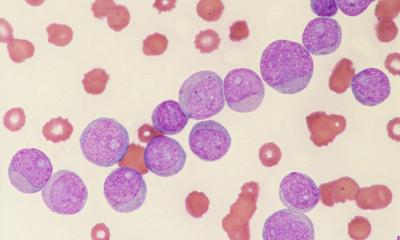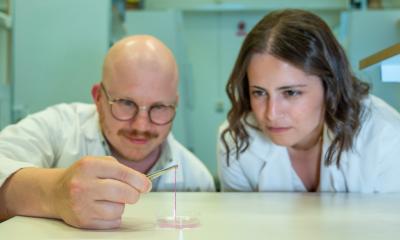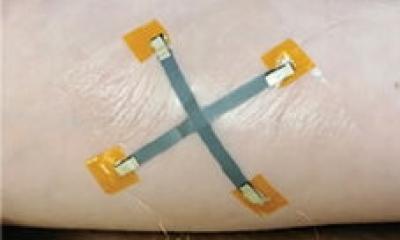Hair helps chronic wound healing
Biotech firm generates skin from mother cells in patients' hair follicles
Hair follicles, long disregarded by researchers, except in the cosmetic industry, may turn out to be `the fountain of youth´, according to Andreas Emmendörffer, CEO of German biotech firm Euroderm.

The use of a few hairs can help to heal chronic wounds, Euroderm reports.
Just a few years ago scientists discovered a surprising detail in the hair follicle: It contains not one but three kinds of adult stem cells. Even more interesting, these are not only part of hair regeneration but also play an important role in skin repair.
Usually, hair stem cells are involved in hair growth and pigmentation. The lifetime of a hair lasts two to six years and goes through three stages, which recur continuously. For most of the lifecycle the hair is in the active stage, followed by a transitional stage that lasts only three weeks, then a resting phase of four further months after which the hair is shed. Then a new hair is built up.
However, the story does not end there. In addition to the melanocyte stem cells, which are responsible for hair colour, researchers also found the mesenchymal and epithelial types of these ‘mother cells’. ‘It was very well known, that mesenchymal turn into different kinds of tissues, for example, the inner organs, whereas epithelial ones are able to regenerate skin,’ Andreas Emmendörffer explained. Scientist discovered that both kinds of stem cells are activated by damaged skin and connective tissue. While the skin stem cells migrate to the skin surface, the mesenchymal are involved in healing deeper wounds. These findings triggered the idea of growing skin from hair.
Euroderm adopted a method introduced by Professor Thomas Hunziker and team at the Dermatological University Hospital in Bern, Switzerland, and developed it into to a therapy for patients. The procedure sounds simple: The patient provides a few hairs, depending on the size of the wound. The hair is immersed in a solution that contains a cocktail of growth factors, including epithelial growth factor. These stimulate the proliferation of the skin stem cells. ‘First they grow in one layer, but once the number of cells exceeds a critical amount, we stimulate them to build up further layers – or simple to make the epidermis thicker,’ Andreas Emmendörffer explained. After two to three weeks the new skin is ready to be grafted onto the wound. ‘We stabilise the thin plaster on a plastic film, which makes it easier for doctors to transfer it to a wound,’ he pointed out. Surprisingly it is not necessary to cover the entire wound with the new grown skin. The patches tend to expand and connect with one another.
The new treatment has proved successful, he said: ‘In a clinical trial, 60-80% of the patients had closed wounds or benefited at least from a significant reduction in the size in a few weeks.’ Equally important, he added, to date no critical side effects have appeared.
01.07.2008










